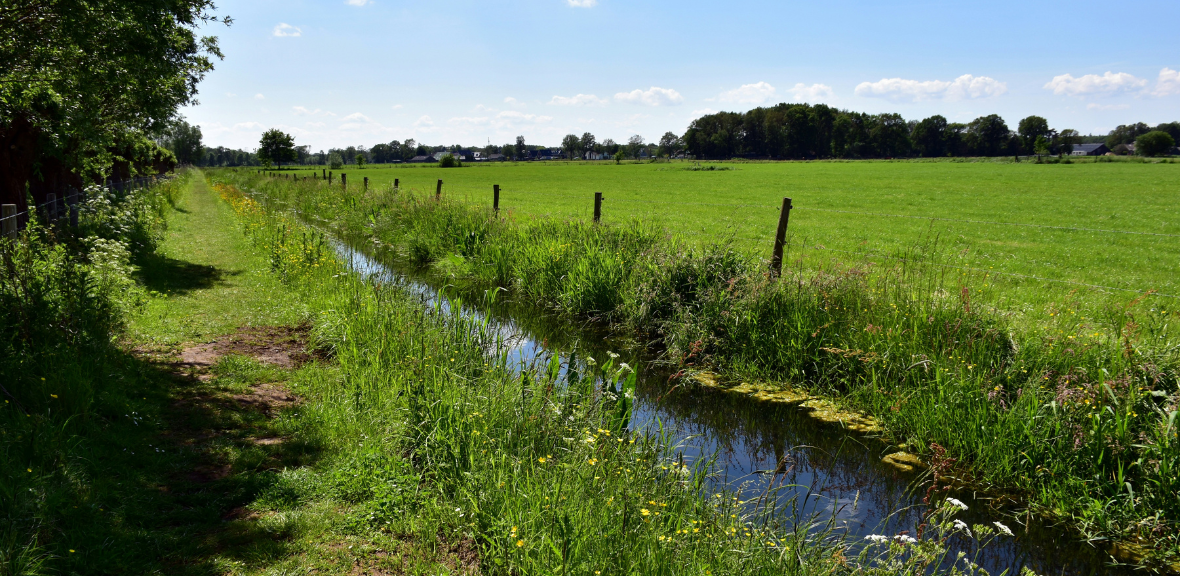
Submitted by Diane L. Lister on Fri, 29/08/2025 - 18:11
Hamid Rahimi, Chris Evans and Laurie Friday, members of the Centre for Landscape Regeneration (CLR), which is based in the Conservation Research Institute, are some of the co-authors of Lines in the Landscape, a paper in Nature Communications Earth and Environment, uncovering the often-overlooked role of ditches and water channels in our landscapes.
The paper highlights how ditches shape biodiversity, biogeochemical cycles, and human societies — with both positive and negative impacts. The authors call for future management that recognises and enhances their multifunctional role at the landscape scale.
Ditches (linear constructions which store and/or move water where humans prefer it to go), via irrigation, drainage, and power, have helped drive the development of human societies. Now, ditches and other linear channels, typically carrying water, are numerous and found on every continent. Their form varies widely with use, which includes land drainage, irrigation, transportation, and boundary marking. Ditches support and shape biogeochemical cycles, biotic communities, and human societies, at multiple spatiotemporal scales. However, ditches are frequently overlooked by researchers in many disciplines. Here, we review the largely unrecognized role that ditches play in environmental processes and human societies. The effects of ditches can be both positive (e.g., biodiversity refuges, water for food production, nutrient retention) and negative (e.g., greenhouse gas emissions, dispersal of pollutants). We call for future management to consider and enhance the multifunctional role that ditches can deliver at the landscape-scale.
Photo credit: Ries Bosch on Unsplash. 'The meadows are next to the ditch (The farmland in summer), Raalte, Netherlands'
